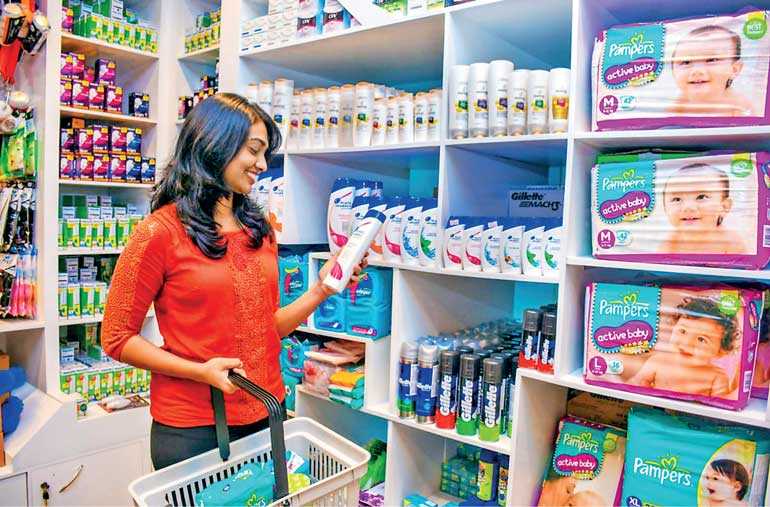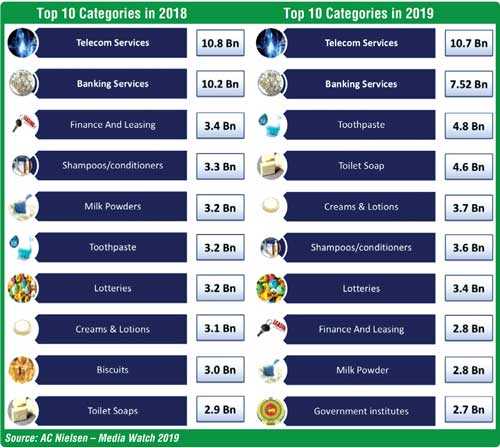Sunday Jan 18, 2026
Sunday Jan 18, 2026
Thursday, 23 January 2020 00:00 - - {{hitsCtrl.values.hits}}

The Sri Lankan housewife is challenged by the rising cost of vegetables and rice

Let’s accept it, Sri Lanka is in trouble with the economy growing at +2.6%, exports declining for the fifth month in a row to register a marginal +1% growth, tourism declining by -20% and S&P credit rating at B with Negative Outlook, which sure indicate a patient in the ICU.
Top economists like Razeen Sally have warned the Government that the short-term injections to the economy can have collateral damage on the economy on the public finances and overall credit rating of Sri Lanka. However, with the new leadership, ‘are we at a tipping point? is the question asked by many. Let me do a deep dive on the reality.
Economic injection
The announcement of the one-year relief on debt for SMEs gave a positive vibe in the market but the reality is that banks which have a skewed SME loan portfolio can have a huge impact on the financial sustainability of the sector. 
The overall financial discipline that the organisation was trying to instil to the customer base will also be hampered with this strategy. I guess time will reveal how Sri Lanka will respond to this economic stimulus and if can boost the overall economy.
The next bombshell to hit Sri Lanka was the Rs. 1,000 wage tier to the estate workers, which sure shook the industry. To be specific the strategic investments that RPCs were pushed to the wall to do were on replanting and fertiliser application. The stipulation for good agricultural practices took the industry to the wire. But the industry must be commended for keeping the home fires burning and generating one and a half billion dollars into the economy. Once again, time will tell how this can be managed.
Whilst I advocate strongly this private sector mentality to be instilled into the public sector so that we can make Sri Lanka move towards a 7% plus economy, one must ensure the fundamentals are in check so that confidence by the private sector is not affected.
Consumer reality
If we are to achieve 7% GDP growth, I would strongly advocate that we stick to the fundamentals to be maintained for sustainability.
I yet remember way back in Q1-2018 the consumer household consumption registered a marginal 2.7% growth in volume. But by 2018-Q2 GDP there were signs the economy was shrinking with household consumption slowing down to +1.3%. By the time Q3 hit Sri Lanka the FMCG consumption declined in volume to -1.3% and -4.9% respectively which meant that people were absolutely cutting back on consumption due to financial issues at the home end. In fact I am hypothesising if the 16 November voter decision was due to an economic issue or the power of a brand.
Private sector reality
A similar decline was seen in the corporate sector too, with the BCI dropping from 128 way back in 2018 January to an appalling 81 by June2019. However, an interesting insight that I wish to share is that the real strength of the private sector was revealed in 2019. 
Even though the FMCG sector recorded a -4% volume done turn, the private sector has invested Rs. 125 billion (which is a growth of +4%) at rack rates on advertising. This means that the private sector continues to invest in Sri Lanka market even though at the macro end things were very rough. They yet believe that Sri Lankan economy can be turned around which is a fact given that we are a small economy of just ninety billion dollars.
Tipping point – Rs. 125 b
If we analyse the adverting investment that the private sector did in 2019, in value terms the spend increased from Rs. 120.5 billion to a marginal 4% increase to take the industry to Rs. 125.4 billion in 2019. Even though this spend is below the 12% and 19% growth seen in the last two years, given the Easter attack shock, we were expecting a slower recovery. In this light, the 4% growth seen is commendable by the private sector. This will be the tipping point for Sri Lanka economy in my view.
The Presidential Elections share of voice would have sure had a positive rub to the number. The above Rs. 125 billion is essentially the media bought on TV, radio and press but if we add the below the line activities that companies have done the spend can exceed 200 billion is my view. Now the question is, what holds true for Sri Lanka in the future? Will 2020 see the turnaround of the country? This is the question in many people’s minds.
The top 10 categories
If we analyse the breakup of the Rs. 125 billion spend, we see how the telecom and banking services sectors continue to be dominant with an aggressive spend of Rs. 18 billion though, down from the Rs. 21 billion invested in 2018.
Telecom has kept its brand building initiative but banking services have cut its investment post the April attack. Incidentally, the financing and leasing sector is a casualty on the advertising front dropping from Rs. 3.4 billion investment to Rs. 2.8 billion in 2019 which is essentially due to the correlation the industry has with the tourism sector.
It’s strange but overall consumption on toilet soaps declined by -9% and -6% in the urban and rural market respectively in the year 2019, the companies have continued to build the market by investing Rs. 4.6 billion as against the Rs. 2.9 billion in 2018. We see a similar pattern of thinking in the toothpaste industry where the overall consumption had slipped by -2% but the investment has been pushed up to Rs. 4.8 billion which means the companies yet see hope in the Sri Lankan market even though the housewife is sandwiched between the rising cost and maintaining a quality of life.
A similar advertising spend is seen in the creams and lotion categories where from Rs. 3.1 billion it has been increased to Rs. 3.7 billion. Milk powder manufacturers have taken the back seat – from a spend of Rs. 3.2 billion, it has been cut to Rs. 2.8 billion, which is not healthy for a country like Sri Lanka which for the first time saw households moving out of the category due to the pressure on the purse.
Next steps
We have to trust the leadership and drive brand building and launch new products so that we support the ‘tipping point’ that the current administration is trying to achieve. Hence it’s very important to monitor brand penetration given that economic stimulus injection can get households to start using your brand again. If the category expands due to the overall economy picking up then brand marketers must take the high ground and drive the market with innovation.
To ensure sustainability, if the key brands must drive export marketing, may be start with the Sri Lankan diaspora overseas – be it Australia, UK, Toronto or the US – the ‘risk spread’ to the company can be mitigated with this strategy. I am not sure if the world will hit a global downturn due to the Middle Eastern conflict between the US and Iran but it’s worth being proactive on the global stage as competition is entrenched.
(The writer is a marketer by profession and heads the US-Indian AI company Clootrack – Sri Lanka, Maldives and Pakistan.)